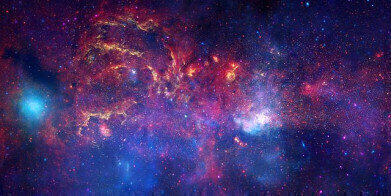HPLC, UHPLC
How to Analyse Space Dust
Sep 30 2014
The two main components needed for life on Earth, or any other planet for that matter, are water and organic matter. Although it is accepted that water was present on the early Earth, questions remain as to how sufficient organic matter became available for life to start.
One theory suggested that the building blocks formed on Earth. The Miller-Urey experiment did demonstrate that from basic molecules like methane, ammonia and water, complex organic molecules on the path to life could be generated. However, recent work on the early atmosphere of Earth has suggested that the right conditions were not present for life to start this way.
Extraterrestrials
A theory currently considered is that the building blocks for life fell to Earth. The organic molecules important for the origin of life on Earth include amino acids, nitrogen molecules and sugar molecules. The idea is that these molecules are delivered to earth on meteorites and space dust. It is estimated that between 100 – 300 tonnes of space dust and meteorites fall to Earth each day.
Carbonaceous chondrites are a type of meteorite containing between 2 - 5% of carbon as organic compounds. These meteorites break off from asteroids and eventually fall to Earth as small lumps of rock. All of the building blocks of life have been found during analysis of carbonaceous chondrites. But the overall majority of material falling to Earth is microscopic dust particles.
The theory that dust and meteorites brought life to Earth has been hindered due to the size of the samples. It has only been possible to analyse large fragments of meteorites, like the Murchison meteorite, and this has meant that there is a great shortfall in the amount of organic material known to fall to Earth.
Nanoflow liquid chromatography
Recently a team at NASA’s Goddard Space Flight Centre has developed a technique that might address the issue by analysing space dust for organic molecules. For more on this story, see: NASA Develop Nanoflow Liquid Chromatography. Coupling a nanoliquid chromatograph (nanoLC) to a mass spectrometer (MS) allowed the analysis of small samples. The instruments and techniques used are state-of-the-art, and haven’t been used for analysis of extraterrestrial materials before.
The nanoLC was used for two reasons:
- It efficiently separated the chiral amino acids, and:
- Very low flow rates can be used due to the column size.
An important component of the analysis was a nanoelectrospray-ionization (nanoESI) source for the mass spectrophotometer. Very low flow rates from the LC column allow the MS source to operate efficiently, supplying the MS with very small sample drops. The small sample drops allow the MS to operate at a high sensitivity, hence aiding the detection of minute amounts of extraterrestrial organics.
The team used the technique on samples from the Murchison meteorite and the results compared favourably with results from traditional techniques. This opens the possibility of using the technique on space dust, possibly allowing a glimpse to the origins of life.
Image Source: Centre of the Milky Way Galaxy (NASA, Chandra, 11/10/09)
Digital Edition
Chromatography Today - Buyers' Guide 2022
October 2023
In This Edition Modern & Practical Applications - Accelerating ADC Development with Mass Spectrometry - Implementing High-Resolution Ion Mobility into Peptide Mapping Workflows Chromatogr...
View all digital editions
Events
Apr 23 2024 Kintex, South Korea
Apr 23 2024 Seoul, South Korea
Apr 28 2024 Montreal, Quebec, Canada
May 05 2024 Seville, Spain
May 15 2024 Birmingham, UK














